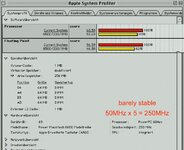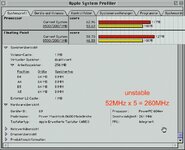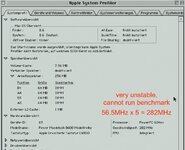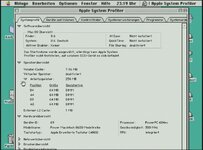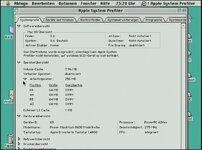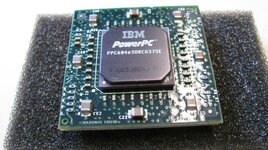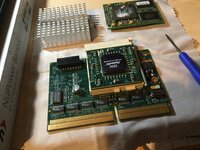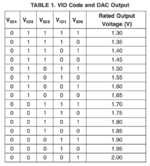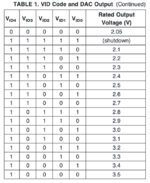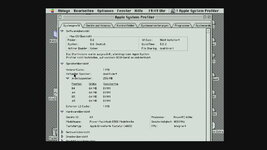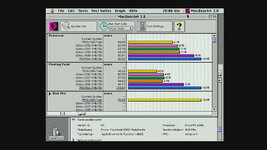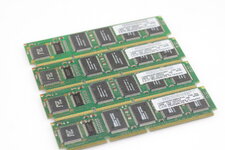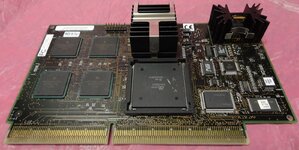stynx
Well-known member
I have bought an IBM 604ev CPU from eBay. There was a pin missing, that I fixed. The PGA module had no populated VID resistors and did not work in the carrier initially. I modified the G3 carrier to be able to select the VCore voltage manually.
The 604ev did finally boot into Mac OS at 4x50MHz with 1.9V VCore.
Interestingly, the FPU seems to be a bit more powerful than the 604e FPU. Any attempt to get the 604ev to run at more than 200MHz failed at one point or another. I tried to push the VCore in steps to 2.5V but it did not get more stable. I did get some benchmark results but the CPU was never completely stable.
I have a 375MHz 604ev on the way and I hope I can get that chip working more reliably.
In the end, I want to replace the two 604e from a dual-cpu card with 604ev chips and clock them higher. Apart from the VCore, the 604ev is seemingly completely backwards compatible. Just imagine a dual 400MHz card for the 9600MP
The 604ev did finally boot into Mac OS at 4x50MHz with 1.9V VCore.
Interestingly, the FPU seems to be a bit more powerful than the 604e FPU. Any attempt to get the 604ev to run at more than 200MHz failed at one point or another. I tried to push the VCore in steps to 2.5V but it did not get more stable. I did get some benchmark results but the CPU was never completely stable.
I have a 375MHz 604ev on the way and I hope I can get that chip working more reliably.
In the end, I want to replace the two 604e from a dual-cpu card with 604ev chips and clock them higher. Apart from the VCore, the 604ev is seemingly completely backwards compatible. Just imagine a dual 400MHz card for the 9600MP

